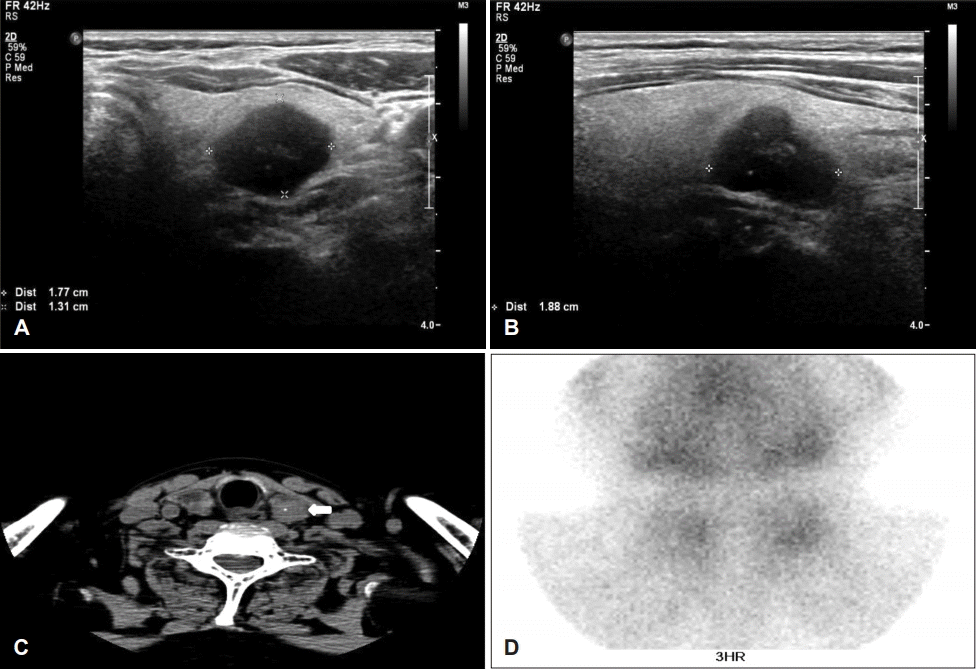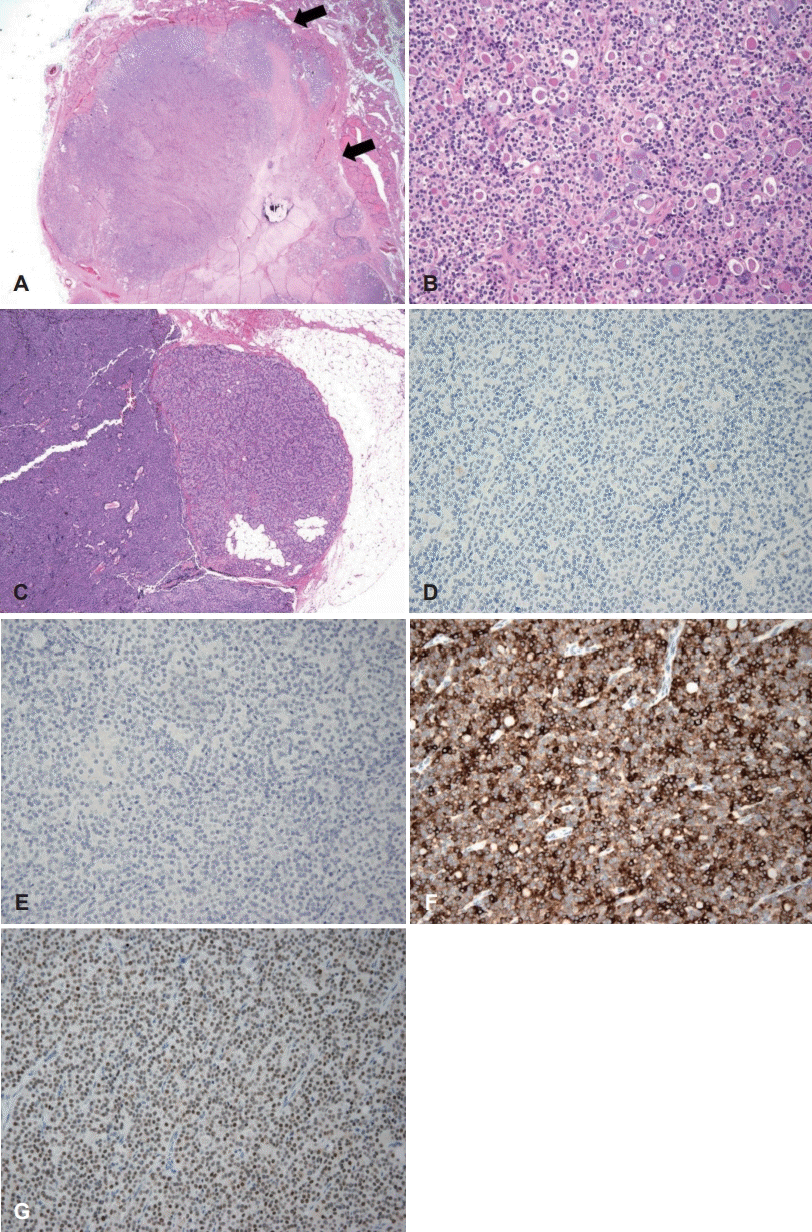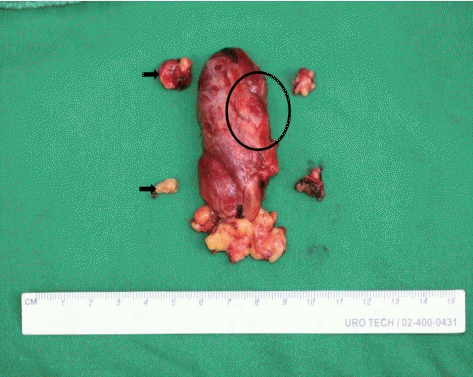서 론
증 례
 | Fig. 1.Preoperative imaging studies. Transverse scans of neck ultrasonography show hypoechoic nodules, 1.7×1.3×1.8 cm sized mass on posterior aspect of left thyroid gland (A) and (B) (asterisks), and the non-enhanced axial neck CT scans show 2.1×1.9 cm sized ovoid mass including calcification (arrow) (C), and the three hours’ image of 99mTc-sestamibi scan shows no abnormal finding (D). |
 | Fig. 3.The gross specimens. (A) is extracted left thyroid gland and the intrathyroidal mass is marked with a black circle. (B) is horizontal cutting at mid-level of left thyroid (black circled portion), and it shows pale yellowish and firm mass. (C) is right upper parathyroid mass. |
 | Fig. 4.The pathological findings. The tumor shows solid growth pattern and invades adjacent thyroidal parenchyma (arrows, H&E, ×25) (A). Due to uniform tumor cells with colloid-like material, it is difficult to differentiate between follicular thyroid neoplasm and parathyroid neoplasm based on the histology (H&E, ×200) (B). It shows contralateral parathyroid hyperplasia (H&E, ×25) (C). The immunohistochemical findings. The tumor cells are negative for thyroglobulin (D) and thyroid transcription factor-1 (E), which suggest non-thyroidal origin tumor. And the immunopositivity for cytokeratin 7 (F) and GATA-3 (G) support that the tumor is parathyroid neoplasm (×200) (D-G). H&E: hematoxylin and eosin. |




 PDF
PDF Citation
Citation Print
Print




 XML Download
XML Download